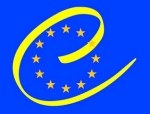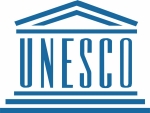The Council of Europe has its offices at Strasbourg (France) and gathers in its 47 member States almost all of the countries of the European Continent. The status of observer was granted to the Holy See on 7 March 1970, but cooperation began in 1962.
Instituted on 5 May 1949 by 10 founding states, the Council of Europe has as its aim the creation of a democratic and common legal space in Europe, respecting the European Convention on human rights and other reference texts that protect the individual.
Instituted in 1949, the Council of Europe quickly saw the need to give Europe a symbol with which Europeans could identify. On 25 October 1955 the parliamentary assembly chose unanimously a blue flag with a circle of twelve golden stars. On 9 December 1955, the Committee of Ministers adopted this European flag, inaugurated on 13 December that year in Paris. On a blue background representing the sky, the stars form a circle in sign of Union.
The number of stars is fixed, twelve being the symbol of perfection and completeness and bringing to mind the apostles, the sons of Jacob, the labours of Hercules, the months in the year, etc.
The builders of Europe launched the process by founding the Council of Europe in 1949 and setting up the European Coal and Steel Community (ECSC) in 1950 and the European Economic Community (EEC) in 1957. These men of dialogue, who had lived through two world wars and had first-hand experience of a number of European cultures, were the pioneers of a Europe of peace founded on the values of human rights, democracy and the rule of law.
See further : The website of the Council of Europe and the European Cultural Convention


